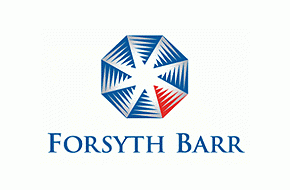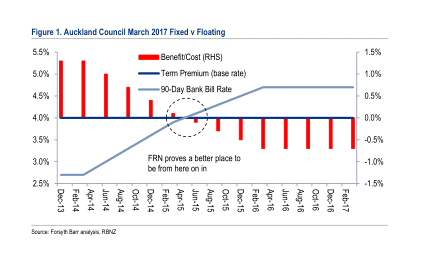
Content supplied by Forsyth Barr
The following is a summary of the key events impacting fixed income markets over the past week.
The “historically high” NZD continues to place pressure on the central bank and a lot seems to depend heavily on the Fed’s tapering plans and our own inflationary pressures. Once again the level of the NZD is impacting the RBNZ’s ability to deliver its monetary policy.
RBNZ still trying to talk the NZD down
There is little doubt that if the NZD was lower the Reserve Bank of New Zealand (RBNZ) would have raised the Official Cash Rate (OCR) by now. In a speech to Federated Farmers Meat and Fibre Council in Wellington, The Reserve Bank Assistant Governor and Head of Economics Dr John McDermott said “The nominal exchange rate is currently at historically high levels against nearly all of our trading partners. The real exchange rate – which takes into account relative inflation rates, and so is a better measure of overall competitiveness – is also at historically high levels.”
“However, the Reserve Bank believes that, from a long-term perspective, the exchange rate is overvalued. The high exchange rate is contributing to economic imbalances and the Reserve Bank would like to see it lower in order to promote more sustainable economic growth.
Aussie in the same boat
The RBNZ speech came a week after the Reserve Bank of Australia (RBA) said it was “open minded” about currency intervention. The comment was in response to an International Monetary Fund (IMF) report that said the Australian Dollar was 10% overvalued. The RBA is not under the same pressure as the RBNZ with the lucky country’s economy not performing as well as New Zealand’s.
The RBNZ will no doubt be hoping that the recently implemented loan-to-value restrictions may buy it some valuable time, as the central bank does not want to be the only central bank raising interest rates.
However, if inflationary pressures continue to rise, the RBNZ may be forced to ignore the subsequent pressure that an OCR rise may have on the NZD. The market definitely believes the RBNZ will be forced to raise the OCR sooner rather than later with the latest OIS pricing indicating three +25bp hikes by July 2014.
Swap rates rising again
As we have mentioned previously, the OCR is different to swap rates and fixed income investors are subject to movement in the swap curve, impacting the valuation and pricing of fixed income portfolios and securities.
Last week, swap rates rose by +12bp to +14bp along the curve taking the 10-year swap to +138bp higher year-to-date. The two-year swap rate is now +97bp higher year-to-date. These are the moves that directly impact on the valuation (negatively) of a fixed income portfolio (when viewed in isolation of any corporate margin applicable).
Insulate the portfolio
Fixed income investors who believe interest rates (both the OCR and swap rates) are likely to rise are able to utilise securities such as floating rate notes and annual reset securities. The coupon or dividends of these securities will rise as interest rates (swap rates) rise and therefore will help insulate a fixed interest portfolio from potential capital losses.
Floating rate notes versus fixed rate bonds
As we sit at the bottom of the interest rate cycle with market expectations that interest rates will rise in the future, should fixed income investors’ be utilising floating rate notes (FRN’s) as opposed to fixed rate bonds?
Below we look at two examples: the first being Port of Tauranga’s (POT) recent fixed rate issue and Auckland Council’s floating rate note issue (BKBM +47bp). The POT issuer margin was 1.33% over the swap rate of 4.535%, resulting in a fixed coupon of 5.865%. Alternatively POT could have issued a 6-year FRN at a 1.33% margin over the BKBM (90-day bank bill rate) to result in a first coupon of 4.00%, meaning POT would have secured six year funding at a variable (unknown) cost that re-priced every 3 months. The positive sloping yield curve delivers a healthy premium to investors. As the difference between the 90-day bank bill rate and the 6-year swap rate is 1.865% (4.535% minus 2.67%), so only once the 90-day bank bill rate starts to set above 4.535% would an investor be better off in a POT floating rate note.
Given the Reserve Bank of New Zealand (RBNZ) is expected to hike the Official Cash Rate (OCR) by approximately 2.00% to 4.50% by March 2016 (implying a 90-day bank bill rate of 4.70%), investors are currently better rewarded to accept POT’s fixed rate bonds benefitting from the term premium.
Auckland Council March 2017 Fixed v Floating

Should an investor buy the AKC FRN or the fixed rate tranche?
As we can see in Figure 1, an investor is indifferent when analysing the offer for Auckland Council’s FRN or fixed rate bond. The base rate for a fixed tranche was 4.0% versus the floating rate base of 2.67%, so investors are initially receiving higher income from the fixed rate tranche. However, whilst initially ‘ahead’ up to March / June 2015, due to the four-year swap rate being higher that the 90 day bank bill rate, the forecast rise in the 90 day bank bill rate (data sourced from the RBNZ forecasts) soon rises above the initial four-year swap rate of 4.0%. Investors will then be receiving higher income through to maturity.
Our view is if there a compelling argument for investing in longer dated fixed rate bonds then we recommend fixed rate bonds, however when the outcome is similar to the Auckland Council example, we recommend utilising FRN’s as we believe there is a chance that interest rates may surprise on the upside.
Corporate / Credit News
ANZ (New Zealand) released its general disclosure statement for the year ended 30 September 2013. ANZ’s NPAT increased by +3.7% to NZ$1,374m along with its loan book +4.4% and deposit book which grew +5.5%.
ANZ’s residential mortgage book grew by +2.7% with 22% of its residential mortgages in the ‘high’ loan-to-value ratio bracket. The capital position remains good with the core equity ratio at 10.4%, the tier 1 ratio at 10.8% and a total capital ratio of 12.4%.
Air New Zealand (AIR) had its Baa3 unsecured Issuer credit rating affirmed by Moody’s Investor Services. Moody’s also maintained its stable outlook.
The Debt Management Office (DMO) received tepid demand from its auction of NZ$200m of September 2025 inflation-indexed NZGB’s. The DMO received 32 bids totaling NZ$268m for the inflation protected bonds resulting in a 1.34x coverage ratio.
Goodman Fielder (GFF) held its annual general meeting highlighting the difficult environment is expected to continue. GFF said that high commodity input prices in its dairy business in New Zealand are ‘challenging’. In terms of its balance sheet management, GFF has reduced net debt by -40% from FY12, pushing net debt / EBITDA to below 2.0x. Interest cover now sits at around 4.0x.
Rabobank had its credit rating downgraded from AA to AA- by Fitch Ratings. Fitch also maintained its negative outlook. Fitch stated the downgrade was largely due to the improving credit profile of its peers.
The RBNZ announced New Zealand had a new bank. ICBC New Zealand Limited is a fully-owned subsidiary of Industrial and Commercial Bank of China Limited and becomes New Zealand’s 23rd registered bank.
The RBNZ release it survey of inflation expectations which saw a rise from 2.06% as at 30 June 2013 to 2.36% as at the end of September.
---------------------------------------------------------------------------------------------------
Disclosures and Disclaimers:
Disclosure: The comments in this publication are for general information purposes only. This publication is not intended to constitute investment advice under the Securities Markets Act 1988. If you wish to receive specific investment advice, please contact your Investment Advisor. Forsyth Barr Limited and its related companies (and their respective officers, agents and employees) may own or have an interest in securities or other products referred to in this publication, and may be directors or officers of, or provide investment banking services to, the issuer of those securities or products, and may receive fees for acting in any such capacity in relation to that issuer. Further, they may buy or sell securities as principal or agent, and as such may undertake transactions that are not consistent with any recommendations contained in this publication. Forsyth Barr Limited and its related companies (and their respective officers, agents and employees) confirms no inducement has been accepted from the researched/recommended entity, whether pecuniary or otherwise, in connection with making any recommendation contained in this publication or on our website.
Analyst Disclosure Statement: In preparing this publication the analyst(s) may or may not have a threshold interest in the securities mentioned in this publication. A threshold interest is defined as being a holder of more than $50,000 or 1% of the securities on issue, whichever is the lesser. In preparing this publication non-financial assistance may have been provided by the entity being researched. A disclosure statement is available on request and is free of charge.
Disclaimer: This publication has been prepared in good faith based on information obtained from sources believed to be reliable and accurate. However, that information has not been independently verified or investigated by Forsyth Barr Limited. Accordingly, Forsyth Barr Limited: (a) does not make any representation or warranty (express or implied) that the information is accurate, complete or current; and (b) excludes and disclaims (to the maximum extent permitted by law) any liability for any loss which may be incurred by any person as a result of that information being inaccurate or incomplete in any way or for any reason. The information, analyses and recommendations contained in this publication are confidential to the intended recipients and are statements of opinion only. They have been prepared for general information purposes and whilst every care has been taken in their preparation, no warranty or representation is given (express or implied) as to their accuracy or completeness. Nothing in this publication should be construed as a solicitation to buy or sell any security or other product, or to engage in or refrain from doing so or engaging in any other transaction. This publication should not be used as a substitute for specific advice. This publication is intended to provide general securities advice only, and has been prepared without taking account of your objectives, financial situation or needs, and therefore prior to acting on any information, analysis or recommendation contained in this publication, you should seek advice from your usual Investment Advisor. Forsyth Barr Limited and its related companies (and their respective officers, agents and employees) will not be liable for any loss whatsoever suffered by any person relying upon any such information, analysis or recommendation. This publication is not intended to be distributed or made available to any person in any jurisdiction where doing so would constitute a breach of any applicable laws or regulations.
We welcome your comments below. If you are not already registered, please register to comment
Remember we welcome robust, respectful and insightful debate. We don't welcome abusive or defamatory comments and will de-register those repeatedly making such comments. Our current comment policy is here.